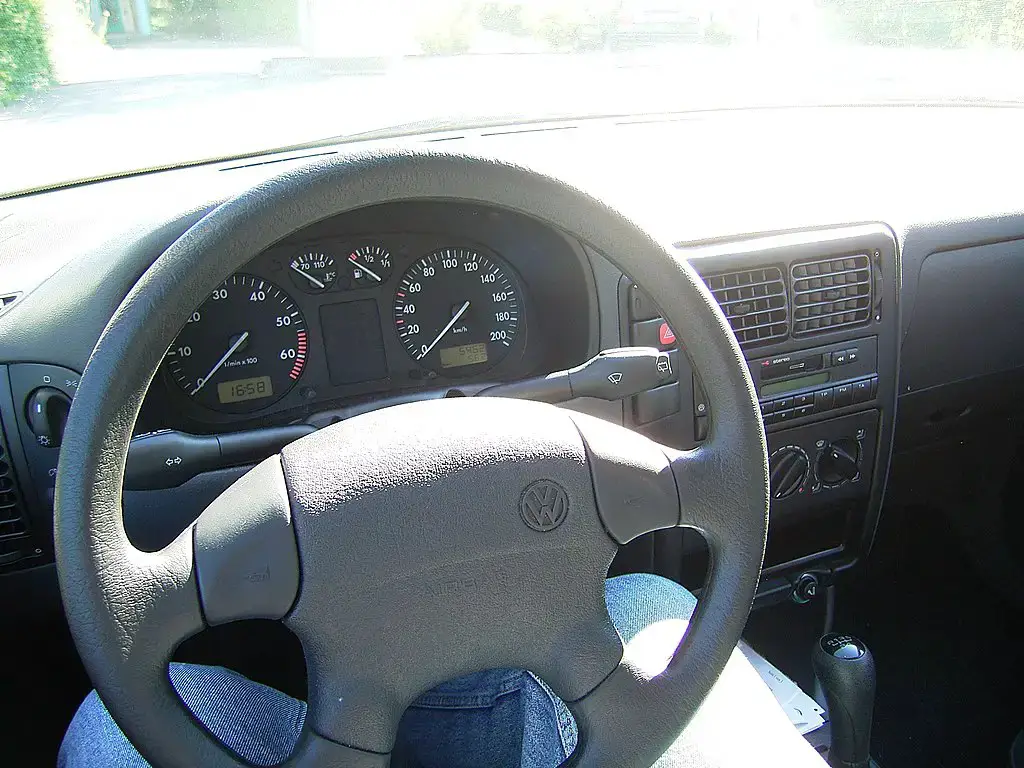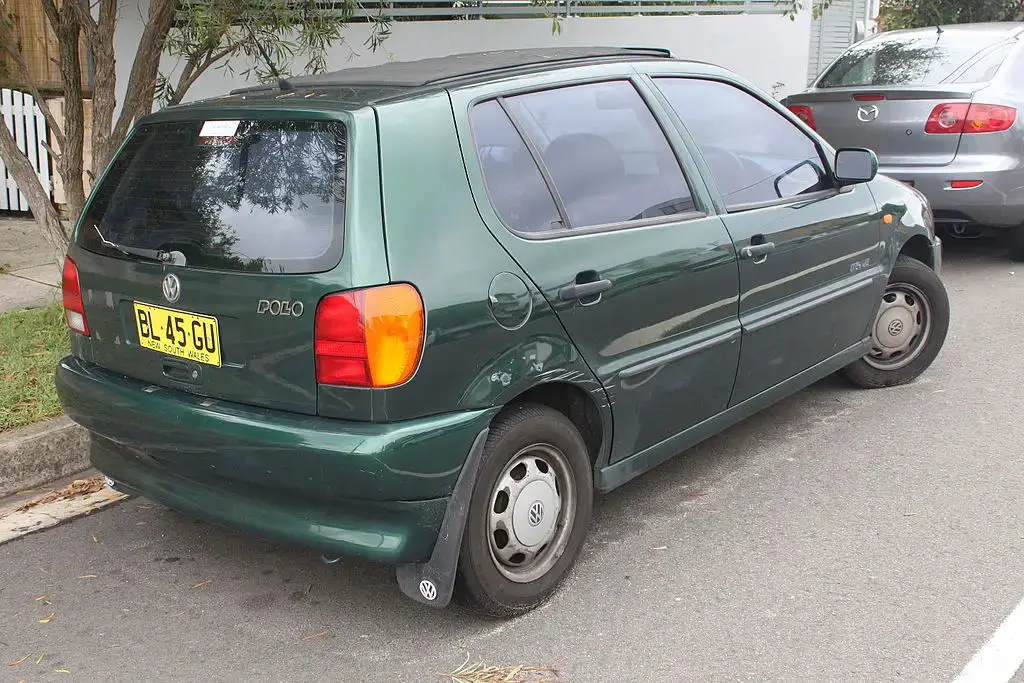Review : VW Polo 6n ( 1994 – 2002 )

I don’t know if I exit the city in one of these, but the VW Polo 6n is one of the cheapest city cars, both for deliveries and for commuting to and from work. But we really got to the bottom of the automotive barrel.
I’m saying this because you can buy a functional VW Polo 6n in 20-22 for as little as 200 pounds and at this price range even faimously cheap stuff such as the Dacia Logan has problems keeping the prices so low. And if you have a budget of 1000 euros, you are already too busy for the VW Polo 6n because at 1000 euros the next degeneration is already becoming available. Or you can buy 4-5 of these.
We can poke fun at it all we want, but this generation was somewhat successful in our continent and yes, VW Polo 6n was like dampness – everywhere and impossible to get rid of it. It is a small, agile, reliable car, cheap to buy and cheap maintain. And very importantly – it has very little electronics and what does go wrong is not essential to the functioning of the car. Plus you have engines shared with Golf III, and if you have a car eaten by rust because you can’t find a good one at breakers or if you indeed found it, then this car is not worth the 5 pounds for a new door, no one will tell you anything. Because you have a Polo 6n. In the worst case, they will ask you when the food order is arriving.
And if you really want to get the most out of your 200 pounds, there is also the Polo sedan and the Polo wagon, for the maximum ammount of kebabs that you can deliver in one go.
I do get the occasional reader with the occasional question: Which car is the best for Uber Eats / Glovo / Foodpanda / whatever got launched this week. And the answer is: VW Polo 6n 1.0 petrol. Sure, you have a missing part there, you have some rust everywhere, in case of an crash you have no chance, most likely you don’t have air conditioning and the window is stuck, but if you drive only through the city, in 2 weeks this car pays itself, and if you share it with a colleague and the car runs 16-20 hours a day, in a week you are already on profit. And with that 1.0 in 3-cylinder mess of an engine, it doesn’t even make sense to install LPG on it.

VW Polo 6n Engines
Petrol
- 1.0 MPI of 45 and 50 horsepower – Beware of the 45 horsepower version because it air cooled, not water cooled. The 50-horsepower instead is ok, although at his age you can realistically expect anything. The biggest problem instead is the lack of equipment, from electric windows to power steering. No, at 45 horsepower the power steering was not even optional.
- 1.3 MPI of 54 horsepower – Found on the Golf II and, oddly enough, on the Audi 80, this petrol engine is from another era, that must be forgotten. It has a carburetor, it has a single-point injection, and these two are the main points of interest in terms of reliability.
- 1.4 MPI of 60, 75 and 100 horsepower – The 16hp 16v version was almost an Polo GTI, and the 60 and 75 horsepower are by far the most popular engines on the VW Polo 6n. And Fabia. And Lupo. And Cordoba. I think if you go to the closest vet’s office to you and ask for VW 1.4 MPI spark plugs, they’re probably have some somewhere in the back. It’s that popular. As for reliability, you only have to take care of the timing belt, as well as the general issue of the car.
- 1.6 MPI of 75, 100 and 125 horsepower – The regular 75 and 100 horsepower versions are only found in the sedan and station wagon versions because for the hatchback they only had the 125 horsepower GTI version. Yes, the Polo GTI 6n had 125 horsepower out of a 1.6 aspirated and it was as bonkers as you’d imagine.
- 1.8 MPI of 111 horsepower – Also found only on the station wagon and sedan versions, but far too rare to talk about as it was too expensive for the Polo to make sense.
Diesel
- 1.4 TDI of 75 horsepower – I don’t have to say anything about the 3-cylinder version of the famous 1.9 TDI from VW. Launched with the 1999 facelift, the 1.4 TDI is reliable, is adequatelly fast and economical. Basically, it is the wet, internal combustion dream of any 20 year old european. And the 20 year olds don’t even mind the noise of the 3 cylinder diesel, which is identical to the noise of gravel falling from the wheelbarrow.
- 1.7 SDI of 60 horsepower – Nothing special to report for this walking dead of an engine, which was available only on non-facelift. It’s so slow that by the time you get to the destination you’ve already conceived and raised a family.
- 1.9 SDI of 64 and 68 horsepower – Hugely popular on the Caddy, the immortal 1.9 SDI is the second most popular diesel engine on the VW Polo 6n, after the 1.4 TDI. I should mention the crankshaft pulley problem but the engine still works nevertheless.
- 1.9 TDI of 90 and 110 horsepower – The problem was that it arrived too late and too expensive and only on the station wagon so good luck finding one on VW Polo 6n and good luck finding one on the 9n aswell.

VW Polo 6n General Issues
- We are at the bottom of the automotive barrel. Yes, it costs 200 pounds or less, but don’t expect decent or impeccable or perfectly functional cars in this budget. However, with 200 pounds you get yourself an individual means of transport, not necessarily a car, but you get there faster and cheaper than if walking. Fact.
- The VW Polo 6n is notorious for gearbox issues, so all you can do is change the oil and hope the gearbox holds as many deliveries as possible.

VW Polo 6n Verdict
It wasn’t VW’s finest but it did stand the test of time. Today it is a popular delivery car, but also popular among those who do not have or do not want to spend money on a car. So whatever your reasons, if you want cheap motorized mobility, it’s very hard to beat the VW Polo 6n right now.
Which engines do I recommend? For petrol power I recommend 1.0 MPI of 50 horsepower and for diesel 1.4 TDI of 75 horsepower. Honorable mention for the 1.4 MPI petrol aswell.
Similar Articles

Review : Skoda CitiGO ( 2011 - 2020 )

Review : Seat Mii ( 2011 - 2020 )

Review : VW Up! ( 2011 - 2023 )
Write an answer
- Review : Skoda CitiGO ( 2011 - 2020 ) 02 August 2025
- Review : Seat Mii ( 2011 - 2020 ) 02 August 2025
- Review : VW Up! ( 2011 - 2023 ) 16 July 2025
- November 2025
- October 2025
- August 2025
- July 2025
- April 2025
- March 2025
- February 2025
- January 2025
- December 2024
- November 2024
- October 2024
- August 2024
- July 2024
- June 2024
- May 2024
- April 2024
- March 2024
- February 2024
- January 2024
- December 2023
- November 2023
- October 2023
- September 2023
- August 2023
- July 2023
- June 2023
- May 2023
- April 2023
- March 2023
- February 2023
- January 2023
- December 2022
- November 2022
- October 2022
- September 2022
- August 2022
- July 2022
- June 2022
- May 2022
- March 2022
- April 2021
- January 2021
- December 2020
- November 2020
- October 2020
- September 2020
- August 2020
- July 2020
- March 2020